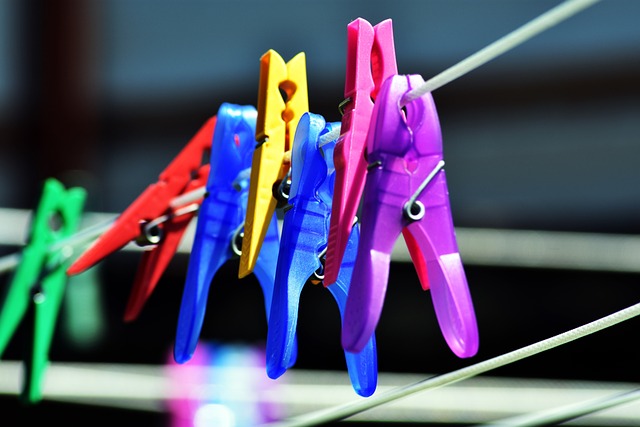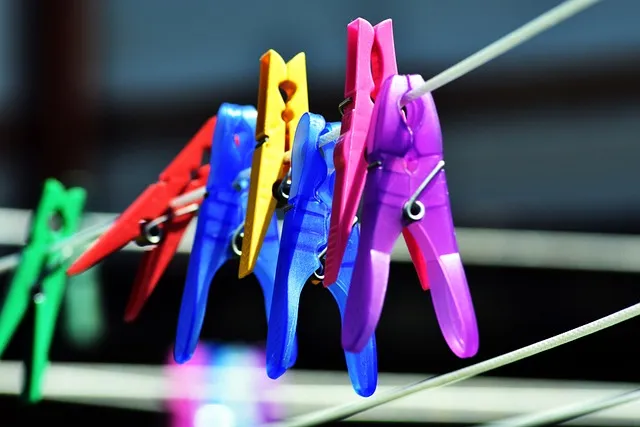Kurutma Makinenizin Isıtma Elemanının Değiştirilmesi Gerektiğini Nasıl Anlarsınız?
First off, if your dryer takes ages to dry clothes or if you’re finding that your laundry is coming out still wet, your heating element might be the culprit. Imagine your dryer as a big, toasty oven—if the heating element isn’t working properly, it’s like cooking a meal in an oven that doesn’t get hot enough. Frustrating, right?
Another sign to watch for is a dryer that’s running but isn’t generating heat. It’s as if you’ve put your clothes in a tumble dryer without turning on the heat! A quick way to test this is to run the dryer with a load of wet towels and check if they come out warm. If they’re cold or barely warm, your heating element might be on the fritz.
Pay attention to any strange smells, too. If you notice a burning smell or the smell of electrical components, your heating element could be overheating or failing. Safety first—if you smell something unusual, it’s best to stop using the dryer until you’ve inspected or replaced the faulty part.
Finally, don’t forget about your energy bills. A malfunctioning heating element can cause your dryer to work harder, leading to higher energy consumption. If you’ve noticed a spike in your electricity bill without a clear reason, a faulty heating element might be to blame.
In short, if your dryer isn’t drying clothes efficiently, smells funny, or is causing your energy bills to climb, it’s worth checking out the heating element. Keeping an eye on these signs will save you from potential laundry day disasters and ensure your clothes stay fresh and dry.
Is Your Dryer Running Cold? Signs That Its Heating Element Needs a Check-Up
How do you know if the heating element is the culprit? First, check for any signs of inadequate drying. If your clothes come out still wet, or if they seem to take an eternity to dry, something’s off. You might also notice that the dryer is taking longer than usual to get the job done. It’s like expecting a quick coffee break but ending up waiting for hours—irritating, right?
Another red flag is if you see a significant rise in your energy bills. A malfunctioning heating element can cause the dryer to work harder, using more electricity to try and reach the desired temperature. It’s as if your dryer is burning the candle at both ends just to get those clothes dry.
Sometimes, you might even hear unusual noises coming from the dryer. If it sounds like it’s working overtime, it might be trying to overcompensate for a faulty heating element. And don’t forget to check for any unusual odors. A burning smell could be a direct sign that the heating element is malfunctioning.
In some cases, you might also notice that the dryer’s drum isn’t getting as warm as it should. If you’re not feeling any warmth at all, that’s a big hint that the heating element needs a check-up. It’s like cooking a meal on a stove that’s not getting hot—frustrating and unproductive.
If any of these signs sound familiar, it might be time to call in a professional to inspect and possibly replace your dryer’s heating element. Keep your dryer in top shape so it can keep your clothes warm and dry, just the way you like them.
Dryer Troubles? How to Diagnose a Faulty Heating Element Before It’s Too Late
First, inspect the heating element visually. Sometimes, you can spot obvious issues like burn marks or a broken coil. If you notice these, it’s a red flag. Next, listen closely. If your dryer is running but not heating, it could be that the heating element has failed.

Another crucial step is to test the heating element with a multimeter. This tool measures electrical resistance, helping you see if the element is working correctly. Set your multimeter to the ohms setting, and check the continuity of the element. If it’s not within the expected range, it’s time for a replacement.
Sometimes, a faulty heating element can trip your circuit breaker. So, if you’re having electrical issues along with drying problems, this could be the culprit. Checking your circuit breaker might just save you from bigger headaches down the line.
Finally, remember to always unplug your dryer before performing any diagnostic or repair work. Safety first, right? Diagnosing a heating element issue early can save you from more extensive repairs and keep your dryer in top shape. Keeping these tips in mind will help ensure that your dryer remains a reliable workhorse in your home.
The Hidden Signs Your Dryer’s Heating Element May Be Failing
First off, check if your dryer is unusually noisy. If it’s making weird thumping or rumbling sounds, it might be working overtime due to a failing heating element. This part is designed to get hot and stay hot, so if it’s faltering, it could be struggling to maintain the right temperature.
Another red flag is if your clothes are coming out of the dryer warmer than room temperature but still damp. Your heating element should be blazing hot, so if it’s lukewarm or inconsistent, your clothes won’t get that dry, cozy feeling you’re used to.
Pay attention to the time it takes for your laundry to dry. If you’re finding that you need multiple cycles to get everything fully dry, that’s a major clue. A working heating element should dry your clothes efficiently, so if you’re spending more time waiting around, it’s worth investigating.
Lastly, check for scorch marks or a burnt smell. If you notice these signs, your heating element could be overheating and potentially causing more damage.
Your dryer’s heating element plays a crucial role in keeping things running smoothly. So, if you spot any of these subtle hints, it might be time to delve deeper and see if it needs replacing.
Stay Warm and Dry: Key Indicators Your Dryer’s Heating Element Is on the Fritz

First off, if your dryer isn’t heating up as it should, that’s a glaring red flag. You might notice that your clothes are taking forever to dry, or they’re coming out still damp. It’s like waiting for a pot of water to boil, only for it to never start steaming. If you’re experiencing longer drying times, it’s definitely worth checking out.
Another sign is an unusual buzzing or humming noise. If your dryer starts making sounds that you’re not used to hearing, especially ones that don’t match the usual rhythm of the drum turning, that’s a hint something’s off. Imagine if your car’s engine started making odd noises; you’d probably get it checked out, right?
Sometimes, you might even smell a burning odor. This could be a sign that the heating element is overheating or that there’s an electrical issue. It’s like smelling smoke and not seeing any fire; it’s a serious concern that needs immediate attention.
Lastly, keep an eye on the dryer’s performance. If it’s not getting as hot as it used to, or if the temperature seems inconsistent, it could be the heating element playing tricks. Think of it as a heater that’s lost its warmth—just not as cozy.
So, if you’re dealing with any of these symptoms, don’t ignore them. Your dryer’s heating element might just be crying out for help.
Avoid Laundry Day Disasters: How to Tell if Your Dryer’s Heating Element Needs Replacing
First off, if your dryer’s taking way too long to dry clothes or the clothes come out still damp, that’s a big red flag. A working heating element should produce enough heat to dry your laundry efficiently. If it’s failing, you might notice your clothes taking an eternity to dry or even coming out cold.
Another clue? Unusual noises. If you hear buzzing, clunking, or loud rattling sounds, your heating element might be struggling or damaged. Picture it like a car engine sputtering—something’s definitely off.
You might also see signs like inconsistent temperatures. When you check your dryer’s cycle, the heat should be steady. If you’re getting bursts of intense heat followed by cool spells, the heating element might be failing to regulate properly.
A quick test can help too. Unplug your dryer, and use a multimeter to check for continuity in the heating element. If there’s no continuity, it’s time for a replacement. Think of it like checking the batteries in your remote—if they’re dead, the remote won’t work.
Lastly, inspect the element visually. Look for visible signs of damage like cracks or burn marks. These physical clues can be telltale signs that the heating element is on its last legs.
By staying alert to these signs, you can avoid a laundry day disaster and keep your clothes warm and fresh.
Heating Element Failure? Expert Tips to Recognize and Fix Your Dryer’s Hot Mess
First off, the telltale sign of a heating element failure is pretty obvious: clothes come out damp and chilly, even after a full cycle. If your dryer seems to be spinning without heating, it’s time to take a closer look. But don’t worry; fixing it isn’t as daunting as it sounds.
Start by checking the dryer’s thermal fuse. This small but mighty part can blow if your dryer overheats, cutting off power to the heating element. To see if it’s the culprit, you’ll need a multimeter to check for continuity. If the fuse is blown, replacing it might solve the problem right away.
Next, inspect the heating element itself. It’s usually a coil-like component that can wear out or become damaged over time. Look for any visible signs of damage, such as broken coils or burn marks. If you notice anything unusual, it’s likely time to replace the heating element.
Don’t forget to check the thermostat and thermal cut-off switch. These components regulate the dryer’s temperature and prevent overheating. If they’re malfunctioning, they might not signal the heating element to turn on. Testing them with a multimeter can help you figure out if they’re working properly.
Finally, remember that sometimes a clogged vent or duct can mimic heating element issues. If the airflow is restricted, the dryer can overheat, leading to problems with the heating element. Make sure the vent is clean and free from obstructions.
With these tips, you’ll be well on your way to turning your dryer’s hot mess into a well-oiled machine again!


Comments are closed.